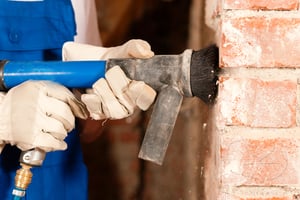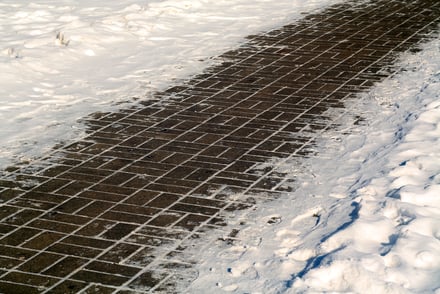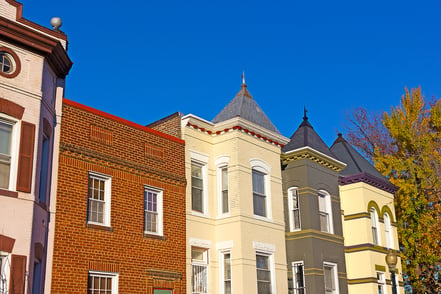Maintaining older brick structures that were constructed from the late 1700s to around 1944 requires traditional methods and materials. This means that many simple DIY repair methods you find on the Internet are not the right way to handle the upkeep of your historic building’s masonry.
For example, when the mortar on your older home is cracking and crumbling out from the brickwork, a repair method called tuckpointing is required. And there is much more to tuckpointing than simply replacing mortar.
Bricks provide durable building materials for interior and exterior walls, chimneys, and fireplaces. But the mortar used to join these bricks together deteriorates over time—even if the bricks themselves are still in good shape. That’s where tuckpointing comes into play. And although it may look similar to grouting tile, tuckpointing is vastly different and used in completely different operations.
Mortar and Grout are Different Substances
Mortar and grout are used in masonry work and tile work, and they serve different purposes. Both products are cement-based, which causes them to harden. There are also variables in the size of the aggregates included in each, and the quantity of water added to the mix.
- Mortar is used to make one material stick to another. A mason laying bricks or concrete blocks will place mortar in the joints between the bricks or blocks. In the same fashion, a tile installer will lay a mortar bed for some types of tile, so they will adhere to the floor or wall.
- Grout is a thinner, flowable filler product that is intended to flow and fill narrow joints between the individual tiles. It is not used to adhere tile to surfaces or to other tiles. It fills the spaces between the tile to prevent moisture and foreign matter from settling between or underneath the tiles.
Tuckpointing is More Than Smearing a Filler 
Many unschooled DIYers view tuckpointing as similar to applying grout to tiles. Nothing could be more wrong than this assumption. Tuckpointing involves removing old, deteriorated mortar from between existing bricks and replacing it with new mortar. While this process can be used on any brick structure, it is most commonly needed and used on historic brick buildings that used softer brick and lime-based mortar in construction.
Often, these older brick homes are mistakenly repaired by adding newer style mortar or even concrete between the brick joints. This causes the older, softer brick to crack and need replacement. Materials closer to the type used in the building’s original construction must be used to preserve the structure’s overall integrity and strength. Older brick and mortar allowed the building to “breathe,” letting moisture evaporate and not settle behind the brick wall and damage the building’s structure or inner components.
If you own an older brick home or building in the Washington, DC area, go for a quality tuckpointing job. Don’t allow inexperienced repairs to violate the integrity of your brick and cause even more damage.
Renaissance Development specializes in the repair and restoration of historic brick buildings in Washington DC. We love old homes and are committed to preserving their historic charm, value, and longevity. If you need help with brick repair or paint removal, contact us for a free site visit and project assessment.
May 15, 2020 3:01:59 PM


